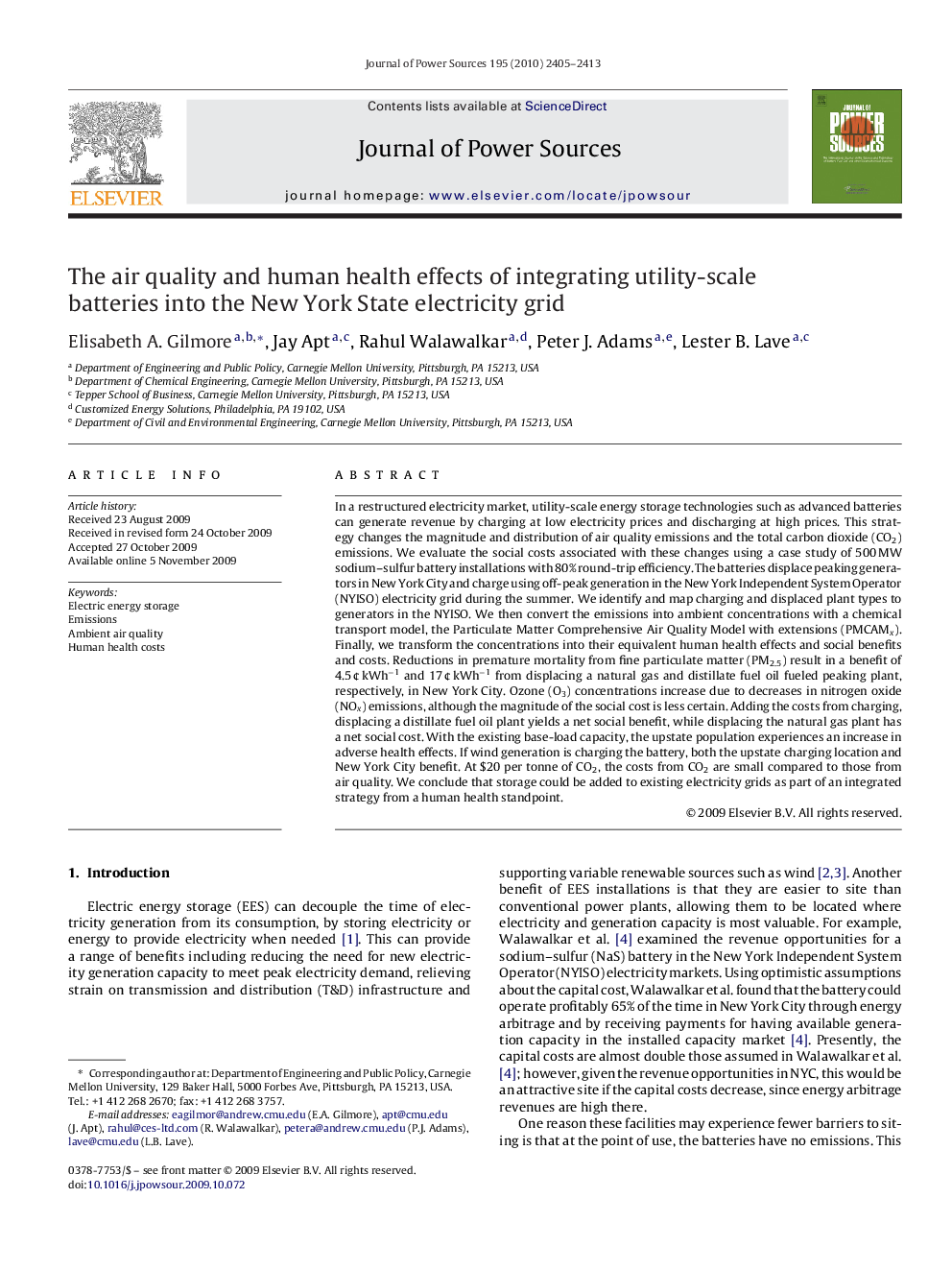| کد مقاله | کد نشریه | سال انتشار | مقاله انگلیسی | نسخه تمام متن |
|---|---|---|---|---|
| 1289100 | 973285 | 2010 | 9 صفحه PDF | دانلود رایگان |

In a restructured electricity market, utility-scale energy storage technologies such as advanced batteries can generate revenue by charging at low electricity prices and discharging at high prices. This strategy changes the magnitude and distribution of air quality emissions and the total carbon dioxide (CO2) emissions. We evaluate the social costs associated with these changes using a case study of 500 MW sodium–sulfur battery installations with 80% round-trip efficiency. The batteries displace peaking generators in New York City and charge using off-peak generation in the New York Independent System Operator (NYISO) electricity grid during the summer. We identify and map charging and displaced plant types to generators in the NYISO. We then convert the emissions into ambient concentrations with a chemical transport model, the Particulate Matter Comprehensive Air Quality Model with extensions (PMCAMx). Finally, we transform the concentrations into their equivalent human health effects and social benefits and costs. Reductions in premature mortality from fine particulate matter (PM2.5) result in a benefit of 4.5 ¢ kWh−1 and 17 ¢ kWh−1 from displacing a natural gas and distillate fuel oil fueled peaking plant, respectively, in New York City. Ozone (O3) concentrations increase due to decreases in nitrogen oxide (NOx) emissions, although the magnitude of the social cost is less certain. Adding the costs from charging, displacing a distillate fuel oil plant yields a net social benefit, while displacing the natural gas plant has a net social cost. With the existing base-load capacity, the upstate population experiences an increase in adverse health effects. If wind generation is charging the battery, both the upstate charging location and New York City benefit. At $20 per tonne of CO2, the costs from CO2 are small compared to those from air quality. We conclude that storage could be added to existing electricity grids as part of an integrated strategy from a human health standpoint.
Journal: Journal of Power Sources - Volume 195, Issue 8, 15 April 2010, Pages 2405–2413